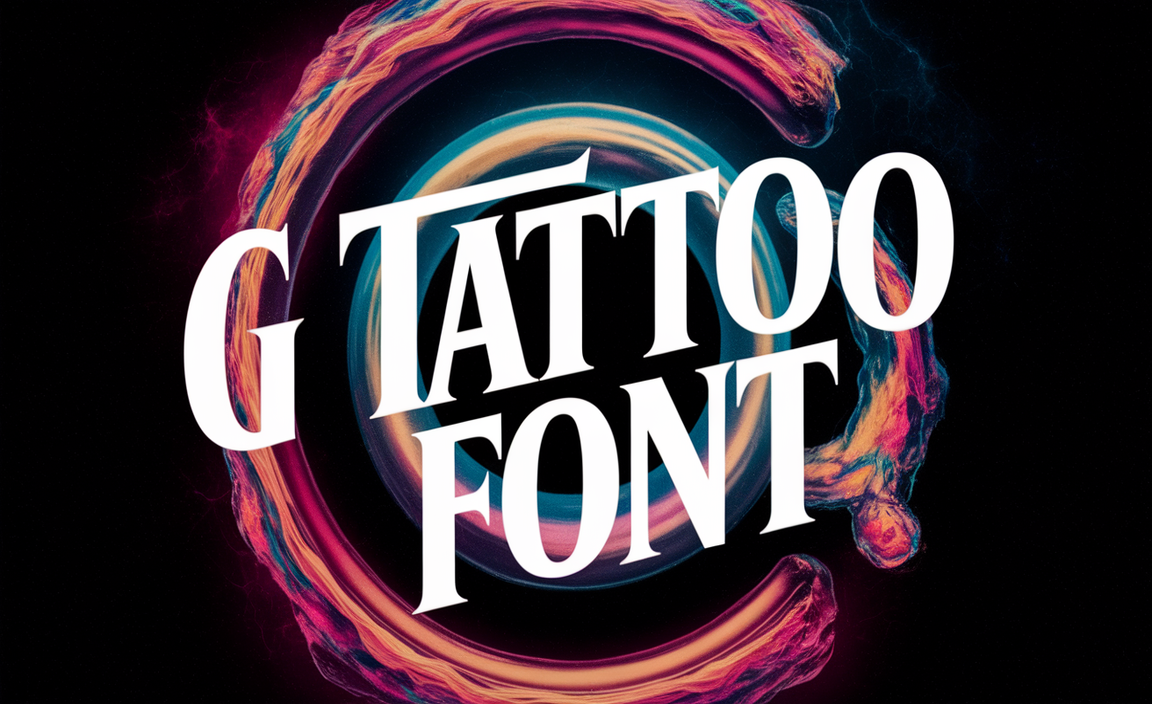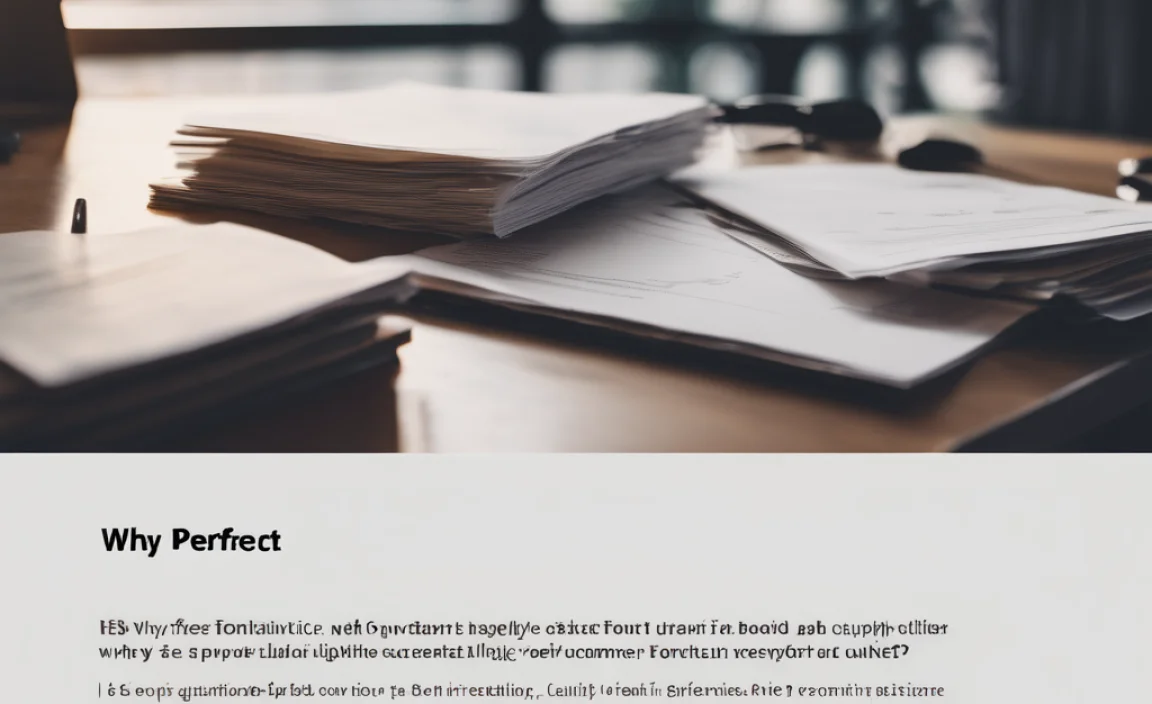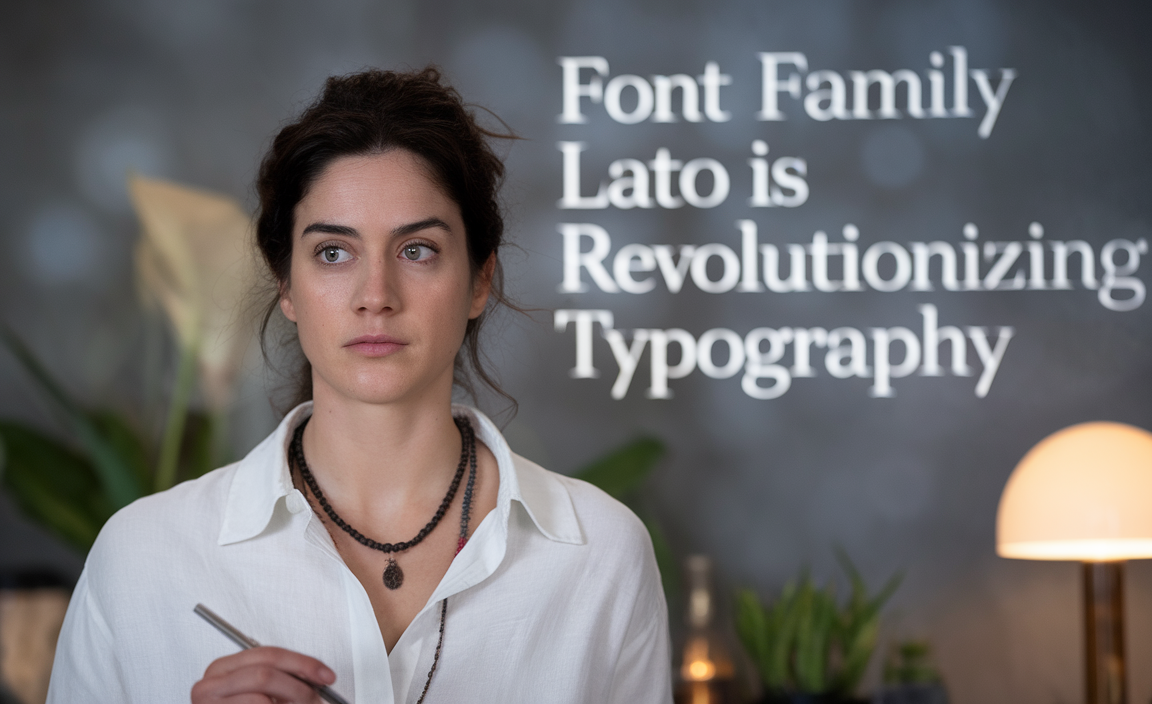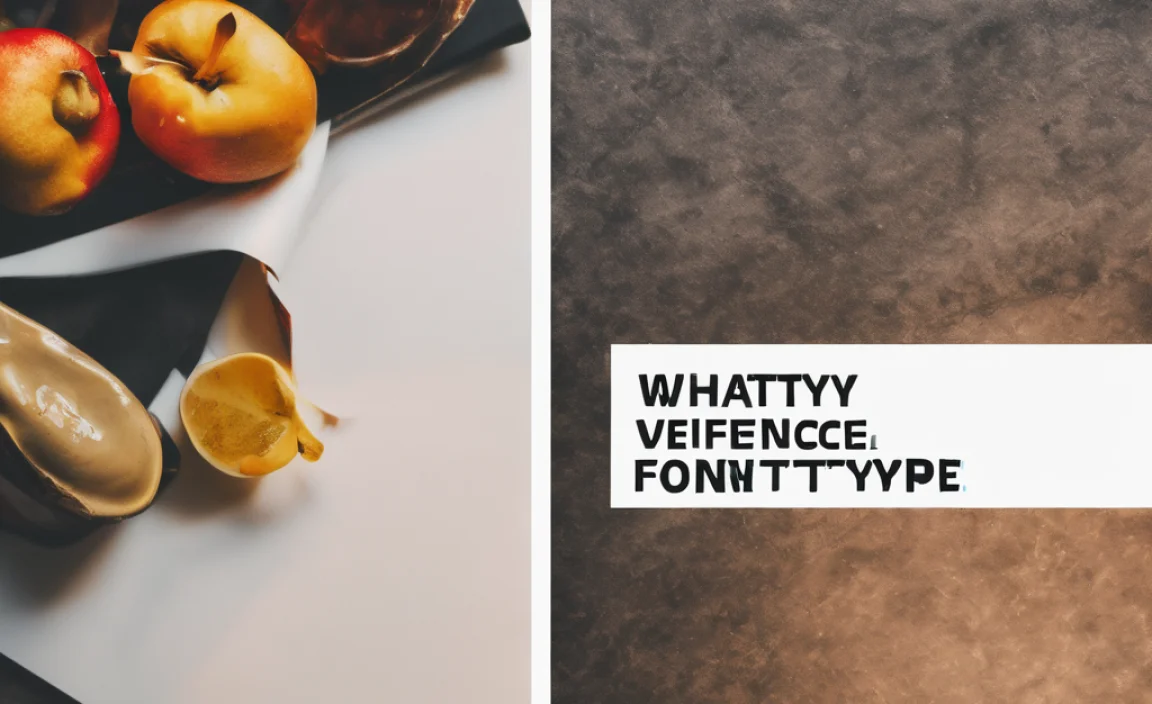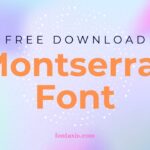The “Remember Me Font,” often encountered on popular platforms and websites, is a typeface designed for clarity and memorability. It’s crucial for effective digital communication because it ensures your text is easy to read and recall. Understanding why this font works so well can help you make smarter design choices for your own projects.
As Linda Bennett from FontAxis, I know how tricky choosing fonts can be. You want something that looks great and is super easy to read. Fonts that stick in your mind, like the “Remember Me Font,” are powerful. They help your message get across clearly. This guide will break down what makes this font so effective and how you can use its principles in your own designs. Let’s dive in!
What is the “Remember Me Font” and Why Does It Matter?
You’ve probably seen it everywhere! The “Remember Me Font” is a common, highly legible typeface frequently used in user interface (UI) design and general web copy. Its primary goal is to be unobtrusive yet perfectly understandable. Think about the last time you quickly scanned a website or an app – chances are, you encountered a font with similar characteristics.
The importance of such a font lies in its ability to enhance user experience (UX). When a font is easy to read, users can absorb information faster, navigate interfaces with more confidence, and feel less fatigued. This leads to better engagement and a more positive impression of your brand or content.
In essence, a font like “Remember Me” isn’t just about aesthetics; it’s a functional tool that supports communication. It ensures your message is received exactly as intended, without the reader having to struggle to decipher your words. This is especially vital for things like login forms, instructions, or important disclaimers where clarity is paramount.
The Design Principles Behind “Remember Me Font”
Fonts aren’t chosen randomly. The “Remember Me Font” and similar typefaces are built on specific design principles that make them stand out for their legibility. Let’s explore these key features:
1. Clarity and Readability Above All
The most prominent feature of the “Remember Me Font” is its exceptional readability. Every letterform is designed to be distinct. There’s minimal ambiguity between similar-looking characters (like ‘I’, ‘l’, ‘1’ or ‘O’, ‘0’). This prevents confusion, especially at smaller sizes or on low-resolution screens.
This focus on clarity is a core principle of good typography. As the great typographer Jan Tschichold emphasized, legibility is paramount for good book design, a principle that translates directly to digital interfaces. You can learn more about classic typography principles from resources like the AIGA Graphic Design Standards Manual, which often touches on font selection for clarity.
2. Neutral and Unobtrusive Aesthetics
This font typically has a neutral, sans-serif design. It doesn’t have decorative flourishes that might distract the reader. Its purpose is to serve the content, not to be the center of attention. This neutrality makes it highly versatile, fitting well into a wide range of designs without clashing with other visual elements.
3. Consistent Stroke Width and Spacing
The strokes of the letters in a font like “Remember Me” tend to have a relatively consistent thickness. This uniformity contributes to a steady reading rhythm. The spacing between letters (kerning) and words (tracking) is also carefully adjusted to optimize flow. This meticulous attention to detail ensures that lines of text appear balanced and easy to scan.
4. Open Forms and Generous X-Height
Look closely, and you’ll notice that the “openings” within letters like ‘a’, ‘e’, ‘s’, and ‘c’ are quite large. These are called “counters.” Open counters make letters more distinguishable. Also, the height of lowercase letters (x-height) is typically generous. A larger x-height generally improves readability because the body of the lowercase letters becomes more prominent relative to ascenders and descenders.
Common Uses of the “Remember Me Font”
The “Remember Me Font” isn’t just a theoretical design concept; it’s a practical workhorse used in many familiar digital environments. Its versatility means you’ll find it in:
- User Interface (UI) Elements: Buttons, menus, form fields, and labels.
- System Messages: Alerts, notifications, and error messages.
- Body Text on Websites: Especially for blogs, news articles, and informational pages where readability is key.
- Mobile Applications: Ensuring text is clear on smaller screens.
- Login and Sign-up Forms: For quick and error-free entry of credentials.
Its prevalence in these areas highlights its effectiveness in supporting user interaction and information consumption. When users need to perform a task quickly and accurately, a font like this ensures the text doesn’t get in the way.
Choosing Your Own “Remember Me” Equivalent: A Step-by-Step Guide for Beginners
While you might not always have direct access to a specific proprietary font termed “Remember Me,” you can easily find and use fonts that offer the same benefits. Here’s how to choose and use them effectively:
Step 1: Define Your Project’s Needs
Before picking a font, ask yourself:
- What is the primary purpose of this text? (e.g., branding, information, navigation, entertainment)
- Who is my target audience? What are their reading habits and preferences?
- Where will this font be used? (e.g., website, print, mobile app, social media)
- What is the overall design aesthetic I’m aiming for?
Step 2: Prioritize Legibility
For content that needs to be read and understood quickly, prioritize fonts known for clarity. Look for sans-serif fonts with:
- Distinct letterforms.
- Open counters.
- A good x-height.
- Clear differentiation between similar characters (e.g., ‘0’ and ‘O’).
Step 3: Consider Font Categories
Understanding basic font categories helps narrow down your choices:
| Font Category | Key Characteristics | Best For | Example Similarities to “Remember Me” |
|---|---|---|---|
| Sans Serif | No serifs (little feet at the ends of strokes). Clean, modern, and highly readable. | Websites, UI, body text, headlines, technical documents. | Many sans serifs, like Arial, Helvetica, Open Sans, and Roboto, share the clarity and neutrality. |
| Serif | Has serifs. Often seen as traditional, sophisticated, and good for long-form reading in print. | Books, newspapers, formal branding, body text in print. | Less direct similarity; serif fonts prioritize a different aesthetic. However, highly legible serifs can still be clear. |
| Display/Decorative | Highly stylized, unique, and attention-grabbing. | Headlines, titles, logos, short bursts of text where impact is key. | Generally unlike “Remember Me” fonts, as they prioritize style over pure legibility. |
| Script | Mimics handwriting. Elegant, personal, or casual. | Invitations, personal branding, decorative elements. | Rarely suitable for the function of a “Remember Me” font due to potential legibility issues. |
Step 4: Test Your Chosen Fonts
Once you have a few options, test them in context:
- Create sample text blocks using various sizes and weights.
- View them on different devices and screen resolutions.
- Read them aloud to catch any awkwardness.
- Ask others for their opinion on readability.
Step 5: Pair Your Fonts Wisely
Often, you’ll use more than one font. A common pairing is a distinctive font for headlines and a highly legible font (like a “Remember Me” equivalent) for body text.
- Headline Font: Choose something with personality that grabs attention.
- Body Text Font: Opt for excellent readability, often a clean sans-serif or a very clear serif.
When pairing, ensure the fonts complement each other in terms of mood and style, but don’t compete too much for attention. For instance, pairing a bold display font with a simple sans-serif like Open Sans can create a visually appealing hierarchy.
Recommended Fonts with “Remember Me” Qualities
Here are some fantastic, freely available (often via Google Fonts) or commercially accessible fonts that embody the clarity and usability of the “Remember Me Font.” These are excellent choices for designers of all levels.
Top Sans-Serif Picks for Legibility:
- Open Sans: A highly popular and versatile humanist sans-serif. It’s optimized for web and mobile interfaces, offering great readability across all digital platforms. Its friendly appearance makes it approachable.
- Roboto: Developed by Google, Roboto is a sans-serif typeface family designed to be a workhorse. It balances mechanical efficiency with natural, friendly curves, making it excellent for both text and display.
- Lato: This font is semi-rounded and feels warm and friendly, while still maintaining a sense of stability and seriousness. It’s known for its excellent readability in both print and web. The Lato specimen page on Google Fonts beautifully showcases its versatility.
- Source Sans Pro: Adobe’s first open-source font, it’s designed to be highly legible at various sizes and resolutions. It’s a great choice for any interface or body text.
- Work Sans: Optimized for screen use, Work Sans creates a strong impression in both its default weights and its more slender, well-spaced forms. It has a slightly more geometric feel while retaining excellent clarity.
When to Use These Fonts:
- For UI/UX Design: Open Sans, Roboto, and Source Sans Pro are fantastic choices due to their inherent readability and neutral feel.
- For Website Body Text: Lato and Work Sans offer a bit more character while remaining perfectly readable for longer passages.
- For Branding Elements: If your brand emphasizes approachability and clarity, these fonts can serve as excellent foundations for your typographic identity.
Comparing Font Weights and Styles
Many of these legible fonts come in various weights (e.g., Light, Regular, Medium, Bold, Black) and styles (e.g., Italic). Understanding how to use them effectively is key to creating visual hierarchy and guiding the reader’s eye.
Using Font Weights
Different weights help you differentiate information:
- Regular/Book: Ideal for main body text where sustained reading is expected.
- Medium: A good choice for subheadings or slightly emphasized important text within a paragraph.
- Bold: Excellent for drawing attention to key terms, short phrases, or main headings. Use sparingly to maintain impact.
- Light/Thin: Can be used for very subtle emphasis or decorative headings, but be cautious of readability, especially at small sizes.
Utilizing Italics
Italic styles are typically used for:
- Emphasis: To highlight a word or phrase within a sentence.
- Technical Terms or Foreign Words: To set them apart from the main text.
- Citations or Titles: For book, movie, or article titles.
- Longer Passages: Sometimes used for quotes or extended emphasis, though bold is often clearer for short points.
When selecting a font family like Open Sans or Roboto, look for ones that offer a comprehensive range of weights and styles. This ensures you have the tools to create sophisticated typographic designs without needing to switch font families unnecessarily.
Beyond Basic Legibility: Emotional Impact of Type
While the “Remember Me Font” prioritizes function, typography also carries emotional weight. The choices you make can subtly influence how your audience perceives your brand and content.
The Role of Serifs vs. Sans-Serifs
As we touched on in the table, the presence or absence of serifs plays a role:
- Sans-serifs (like “Remember Me” types): Often perceived as modern, clean, approachable, and friendly. They are excellent for digital interfaces and contemporary branding.
- Serifs: Tend to evoke feelings of tradition, sophistication, trust, and authority. They can make longer text feel more comfortable to read in print and lend a classic feel to a brand.
For example, a law firm might choose a classic serif font like Times New Roman or Georgia for its website to convey trustworthiness and authority. In contrast, a tech startup might opt for a geometric sans-serif like Montserrat or Poppins to project innovation and dynamism. A wonderful resource for exploring these nuances is the Typewolf blog, which offers insights into contemporary typography in design.
Personality in Typefaces
Even within the highly legible “Remember Me” category, subtle differences in letterforms can create distinct personalities:
- Geometric Sans-Serifs (e.g., Montserrat, Futura): Characterized by their circular forms and clean lines, they feel modern, minimalist, and sometimes even futuristic.
- Humanist Sans-Serifs (e.g., Open Sans, Veranda): Inspired by handwriting and classical proportions, these fonts often feel warmer, more approachable, and organic.
- Grotesque/Gothic Sans-Serifs (e.g., Helvetica, Arial): Known for their straightforward, neutral, and highly functional appearance. They are the epitome of no-nonsense readability.
Understanding these subtle differences allows you to select a font that not only communicates effectively but also aligns with the emotional tone of your message.
Common Pitfalls to Avoid
When working with fonts, especially if you’re new to design, it’s easy to make mistakes. Here are a few common pitfalls to watch out for:
- Using too many fonts: Stick to 2-3 font families at most for a cohesive look.
- Poor font pairing: Ensure your headline and body fonts complement each other and don’t clash.
- Ignoring legibility: Don’t sacrifice readability for style, especially for essential information.
- Using low-resolution fonts: Always use high-quality font files, especially for screen use.
- Overusing bold or italic: Too much emphasis can be distracting and lose its impact.
- Not considering context: A font that works for a logo might not work for body text.
By being mindful of these issues, you can create designs that are both beautiful and highly effective.
FAQs
What is the “Remember Me Font” specifically?
The term “Remember Me Font” isn’t an official font name. It refers to a type of font designed for maximum clarity and memorability, commonly found in user interfaces and digital applications where quick comprehension is key. Think of fonts like Open Sans, Roboto, or Arial.
Why is readability so important for a website?
Readability is crucial because it ensures visitors can easily consume your content. Good readability leads to better user engagement, lower bounce rates, and a more positive user experience. If users struggle to read your text, they’re likely to leave.
Can I use a script font for my website?
You can, but with caution. Script fonts are best used for decorative purposes, headlines, or short, impactful phrases. They are generally not suitable for body text or UI elements where clarity is paramount, as they can be difficult to read, especially at small sizes or on mobile devices.
How do I choose between a serif and a sans-serif font for my brand?
Sans-serif fonts are modern, clean, and great for digital interfaces and a friendly brand image. Serif fonts are more traditional, sophisticated, and often preferred for long-form print reading or a classic, trustworthy brand feel. Consider your brand’s personality and where the text will appear.
What is font pairing?
Font pairing is the art of combining two or three different typefaces in a single design to create visual interest and hierarchy. A common pairing involves using a distinctive font for headlines and a highly legible font for body text, ensuring both aesthetic appeal and readability.
Are Google Fonts good for professional design?
Yes, absolutely! Google Fonts offers a vast library of high-quality, free-to-use fonts that are optimized for web use. Many professional designers rely on Google Fonts for their projects due to their variety, quality, and accessibility.

